If you already have it in your garden, better pair it with these flowers that grow well with cosmos for a beautiful display!
Why settle on just one when you can grow many flowering plants along with your cosmos? Check out our top picks that will give company to your cosmos and add variety and beauty to your garden!
Flowers That Grow Well With Cosmos
1. Zinnias
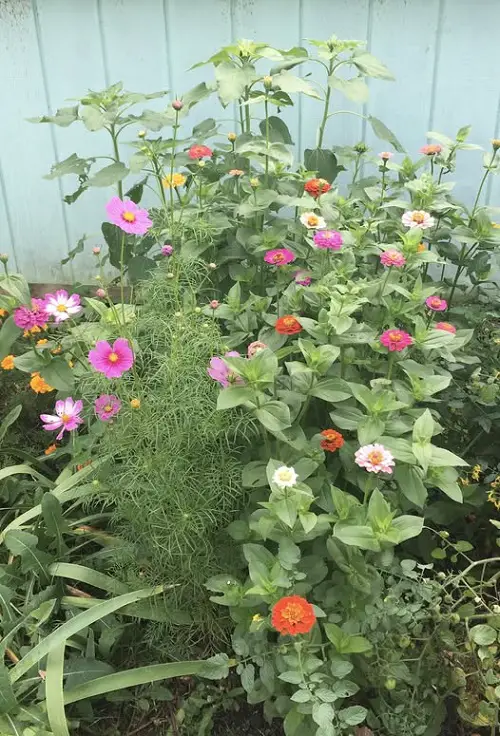
Botanical Name: Zinnia elegans
USDA Zones: 2–11
Zinnia is a fantastic partner for cosmos due to their similar growing conditions and complementary colorful blooms. This annual loves full sun and good air circulation and isn’t picky regarding soil pH levels or type as long as it is well-draining.
These plants can reach 3 feet in height, giving them quite a bit of vertical dominance. Their red, pink, orange, or yellow dome-shaped daisy-like blooms attract many pollinators!
2. Marigolds
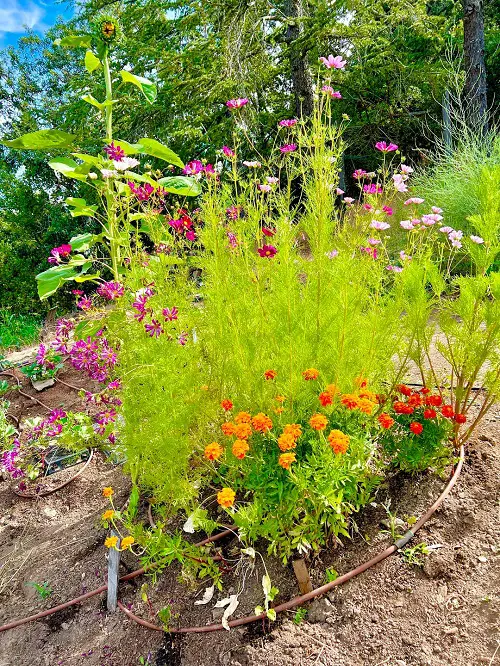
Botanical Name: Tagetes
USDA Zones: 2–11
If you want practicality and beauty, Marigolds are the way to go! These iconic plants have gorgeous orange pom-pom-like flowers and thrive in the same conditions. They also give off a strong aroma when crushed and deter many pests. Plus, the flowers are bitter and keep many grazers at bay.
Some species can reach 7 feet tall, but most remain a modest 4 feet in height, which blends in with the 6 feet of cosmos. Want a guide on how to grow these beauties? We’ve got you!
3. Coneflower
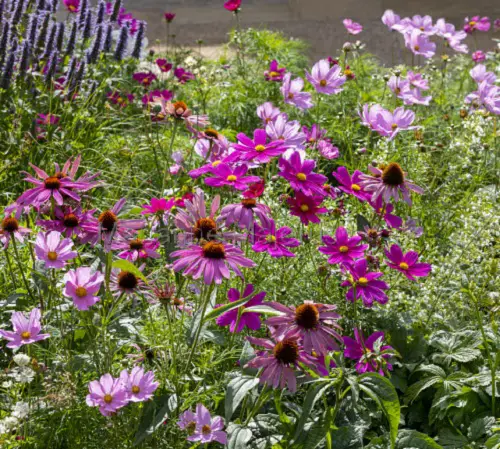
Botanical Name: Echinacea purpurea
USDA Zones: 3–9
Coneflowers and cosmos are best buddies and can be regarded as twins because they love sunny spots and bloom around the same time. Also, coneflowers usually have the same purple-toned flowers as cosmos, with longer petals and a spiky, cone-shaped center.
This herbaceous perennial is a good choice for regions that are drought-prone, have saline soil conditions, and have free-roaming grazing animals, as the plant is unaffected by these issues.
4. Coreopsis
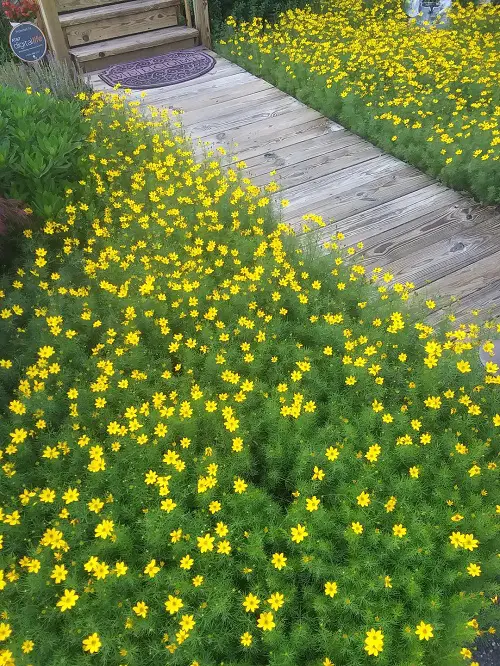
Botanical Name: Coreopsis
USDA Zones: 4–9
Cosmos has a long blooming season, and very few plants can keep up. One such plant that can is coreopsis! The perennial wildflower produces ruffled-edged bright yellow flowers. Plant them in the part of the garden with dry soil and exposure to full sun; they’ll thrive for a long time.
Despite being perennials, there is a chance that they may die within 2 years, but they will effectively reseed. Also, a pro tip to extend the blooming period is to deadhead the spent flowers.
5. Sage
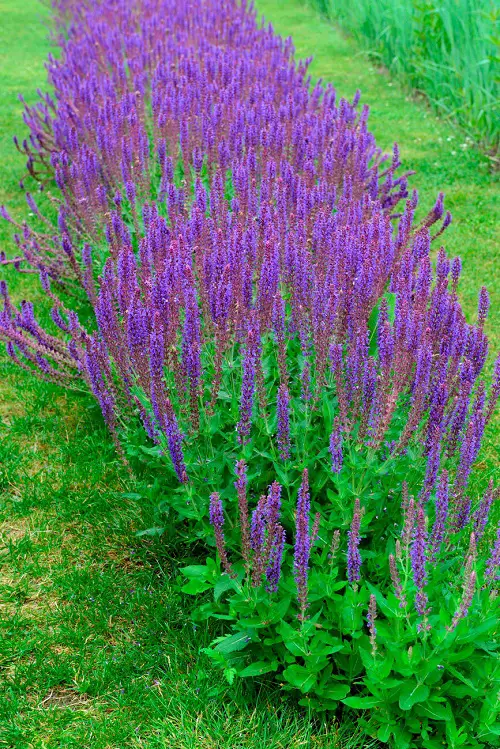
Botanical Name: Salvia
USDA Zones: 5–10
Sage prefers dry soil and lots of sunlight, like cosmos, and the two can share a common habitat. It has spikes of purple flowers reaching up to 2 feet high and is known for its strongly scented leaves filled with essential oils, which deter pests and keep cosmos safe.
Did you know cosmos also helps sage by attracting natural predators like lacewings, which feast upon pests that can harm the latter? It’s a win-win situation if you plant them together!
6. Nasturtiums
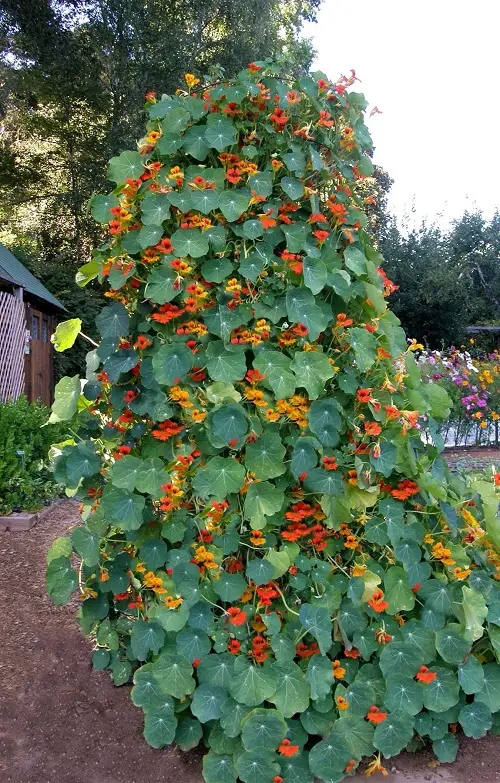
Botanical Name: Tropaeolum majus
USDA Zones: 2–11
Nasturtiums are climbers, but they adopt a low-growing habit when they don’t get a host to cling to. This is especially useful for cosmos because they help shade the soil effectively, lowering the temperature and retaining moisture and fertility. And they also help suppress weeds!
They are also pleasing to the eye, as they have brightly colored funnel-shaped edible flowers. What’s not to like?
7. Snapdragons
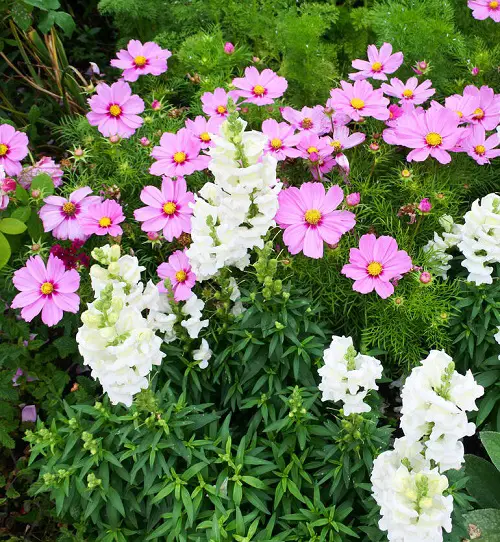
Botanical Name: Antirrhinum majus
USDA Zones: 7–10
Snapdragons are another famous plant variety that makes great companion plants for the cosmos. They both thrive in full to part sun and are similar in height, helping them blend into one another. However, both plants will need staking to support the taller varieties of each.
Their flowers come in many colors, like pink, yellow, white, and purple. The cool part about the blooms of this plant is that they mimic a dragon’s snout and can open when gently squeezed!
8. Dwarf Sunflowers
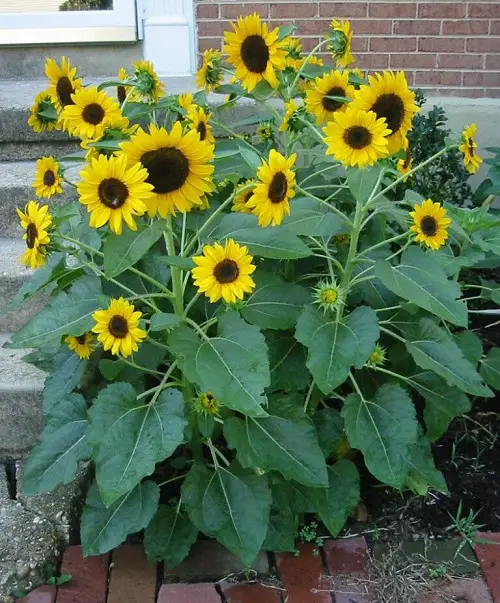
Botanical Name: Helianthus annuus
USDA Zones: 2–11
Common sunflowers also make a good team with cosmos, but due to the drastic height difference, it is better to go with dwarf sunflowers. These compact ones pair up well with cosmos because both are sun-loving and grow in similar soil types.
Dwarf sunflowers usually range from 1 to 3 feet tall and have bright yellow petals and dark centers. The contrast between the upright sunflowers and the delicate, airy cosmos is a spectacle. And you can choose from tons of colors!
9. Lavender

Botanical Name: Lavandula angustifolia
USDA Zones: 5–9
Much like sage, lavender grows well with cosmos, too. It has the same practical uses. Both do well in dry, sunny spots and don’t like over-saturated growing mediums, so the watering cycle is nearly identical for both.
The silver-green leaves and spikes of purple blooms of lavender add to the cosmos’s color palette, and their strong fragrance also keeps pests away.
Why stop at just one when you can grow many flowers well with cosmos for a lovely floral garden? Do tell us how it goes for you in the comments below!


